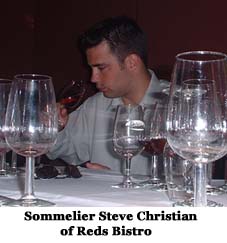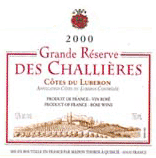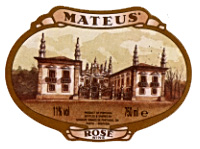![]()
Recent Articles

Seeing
Pink ©
When Rosé Ruled the Roost
© Michael
Vaughan 2001
National Post Weekly Wine & Spirits
Columnist
Saturday,
July 28, 2001
 At one time rosé ruled the world.
Local credit goes to one Pierce G. Thornley, a Toronto based hardware
manufacturers agent, who was approached by the Portuguese trade commission
in the late 1950’s to look at importing their wines. The special shape
of one caught his eye. The wine was Mateus rosé and rest is history! It
wasn’t long before you couldn’t find a Toronto restaurant, which
didn’t feature this new wonder drink. By the 1960’s it had become the
world’s largest selling brand.
At one time rosé ruled the world.
Local credit goes to one Pierce G. Thornley, a Toronto based hardware
manufacturers agent, who was approached by the Portuguese trade commission
in the late 1950’s to look at importing their wines. The special shape
of one caught his eye. The wine was Mateus rosé and rest is history! It
wasn’t long before you couldn’t find a Toronto restaurant, which
didn’t feature this new wonder drink. By the 1960’s it had become the
world’s largest selling brand.
Well, time hasn’t been too kind
to the pinks of Portugal. It’s not that they aren’t good, but
they’ve been eclipsed by the sweeter, fruity “white” Zins of
California.
All of this came to a head this
week when I finally was able to muster up enough energy to tackle some
40-plus rosés that have accumulated over the past month for a SPIT
(Sommeliers and Professional Independent Tasters) tasting.
Unlike our previous Champagne
tasting, I wasn’t swarmed by sommeliers dying to attend. Rosés may be
perfect for summer sipping, but they’re not a huge component of
restaurant wine lists. In fact, the LCBO’s summer 2001Price Book lists 8
Ontario, 15 US and 18 European rosés – totaling 41 in all! This has
recently been augmented by some dozen new listing which is part of the
seasonal summer rosé program.
As I did a comprehensive tasting
of Ontario rosés last summer, this year’s focus was mostly offshore
including most of the new items. Our four-hour-plus mini-SPIT tasting took
place at Accolade Restaurant in the Crowne Plaza under the watchful eye of
Executive Chef Michael Potters.
![]() Now one would think that local
wine agents, who are supposed to look after the best interests of their
suppliers abroad, would be ecstatic about having a window to strut their
wares. But no, believe it or not, there wasn’t a single rosé from
Portugal. Indeed, a Canadian rep for Casal
Mendes Portugal’s popular pink, emailed me stating that they
have no rosés in their portfolio. This revelation is undoubtedly a big
surprise to Aliança, producer of Casal Mendes. (www.caves-alianca.com)
Now one would think that local
wine agents, who are supposed to look after the best interests of their
suppliers abroad, would be ecstatic about having a window to strut their
wares. But no, believe it or not, there wasn’t a single rosé from
Portugal. Indeed, a Canadian rep for Casal
Mendes Portugal’s popular pink, emailed me stating that they
have no rosés in their portfolio. This revelation is undoubtedly a big
surprise to Aliança, producer of Casal Mendes. (www.caves-alianca.com)
While some might fear that SPIT
tasters might look down their sensitive noses at these once-popular wines,
such concerns are misplaced. Toronto’s top sommeliers might be
discerning but they aren’t snobs. The mandate is to taste what’s
available and bring the best to the table – wines that please the
customer, not simply an educated palate.
It’s sad that certain agents simply can’t get their act together. How can key wines like Sogrape’s Mateus be totally overlooked? To ensure that they weren’t left out, I picked up bottles of both at the LCBO.
Moving back to the work at hand,
understanding rosé isn’t a cakewalk. They come in many widely divergent
styles and from a universe of different grapes.
First, there are the
classical-styled French rosés. These are usually medium bodied, very dry
and firm with subtle fruit flavours. They are typified by the more austere
Rhone pinks, such as Tavel, as well as some Provence and Languedoc
cousins. This style is a good foil for seafood and was the upscale
mainstay of yesteryear.
Unfortunately, many consumers
didn’t appreciate this bone-dry taste, explaining why Tavel is no longer
on the General List. The only one tasted at $15.70 wasn’t worthy of a
detour. In fact, of the 44 products in this blind tasting, a disturbing
total of 8 or 18% had musty, cork related problems.

 Fortunately, some dry but not
overly austere French rosés are available. Indeed, they seem to hit the
spot with fans - sales are up a 25%, while new world rosés are static. A
good example would be Perrin
2000 La Vieille Ferme Côtes Du Ventoux
at $8.20 with its refreshing, dry, crisp, berried-watermelon flavours. A
tad brighter is the Grande
Reserve Des Challières 2000
Côtes du Luberon a
fruity blend of Syrah and Grenache at $8.25, which has muted fresh red
apple and dried strawberry flavours.
Fortunately, some dry but not
overly austere French rosés are available. Indeed, they seem to hit the
spot with fans - sales are up a 25%, while new world rosés are static. A
good example would be Perrin
2000 La Vieille Ferme Côtes Du Ventoux
at $8.20 with its refreshing, dry, crisp, berried-watermelon flavours. A
tad brighter is the Grande
Reserve Des Challières 2000
Côtes du Luberon a
fruity blend of Syrah and Grenache at $8.25, which has muted fresh red
apple and dried strawberry flavours.
![]() Fruitier, just off-dry, lighter
bodied rosés are much more accessible and easier to sell. This includes
some off-dry pinks from the Loire as well as the newer rosés of southern
France. One favourite is the well priced 2000
Arabesque Syrah Rosé
a Vin de Pays d’Oc at $8.65 with its light, tangy, dried
raspberry and crabapple flavours.
Fruitier, just off-dry, lighter
bodied rosés are much more accessible and easier to sell. This includes
some off-dry pinks from the Loire as well as the newer rosés of southern
France. One favourite is the well priced 2000
Arabesque Syrah Rosé
a Vin de Pays d’Oc at $8.65 with its light, tangy, dried
raspberry and crabapple flavours.
While we think of rosé as being
very youthful, one of the more interesting entries was René
Barbier Mediterranean Rosé a modest $7.50. This best buy
non-vintage Spanish Catalunya effort has had its ups and downs. The
current release is very rounded with almost creamy, ripe plum flavours
that caress the palate but with just the right touch of Anjou pear
acidity. Look for the L0262 code on the front label; it’s great quaffing
value. (www.renebarbier.com)
 From Portugal, Sogrape’s Mateus
Rosé ($7.40) surprised us with its pleasant, gently sweet,
simple, fruity, strawberry–plum flavours. A clean, light, crowd pleaser
with a nice touch of effervescence. (www.sogrape.pt)
From Portugal, Sogrape’s Mateus
Rosé ($7.40) surprised us with its pleasant, gently sweet,
simple, fruity, strawberry–plum flavours. A clean, light, crowd pleaser
with a nice touch of effervescence. (www.sogrape.pt)
![]() From Ontario, we had three
noteworthy entries. The first was the pleasant, honeyed, just off dry,
strawberry flavoured Daniel
Lenko 2000 White Merlot, which is only available at the winery
at $13.95. Slightly drier is a tasty Pinot Noir blend - Inniskillin 2000
Travigne Rosé at $9.95,
which shows nice accessibility and fruit. (www.daniellenko.com)
(www.inniskillin.com)
From Ontario, we had three
noteworthy entries. The first was the pleasant, honeyed, just off dry,
strawberry flavoured Daniel
Lenko 2000 White Merlot, which is only available at the winery
at $13.95. Slightly drier is a tasty Pinot Noir blend - Inniskillin 2000
Travigne Rosé at $9.95,
which shows nice accessibility and fruit. (www.daniellenko.com)
(www.inniskillin.com)
Of course, white Zinfandel is the
big seller in the pink class, although sales appear to have peaked. Soft,
fruity and slightly sweet, it’s a fine summer quaffer. Having said that,
it was Ontario’s Willow
Heights 1999 Rosé, which obliterated all the big name,
California competitors - from Sutter Home and Gallo to Robert Mondavi! Who
would have believed that a local, non-VQA blend of Cabernet Franc and
Gamay Noir ($9.95 winery only) would have such delicious, slightly sweet,
fruity flavours! (www.willowheights.on.ca)
![]() Ironically, just before heading
out into the 33-degree plus, swampy, smog-festooned Toronto air, I handed
out a chilled ration of Gallo
Wild Vines Strawberry White
Zinfandel
to the rosé survivors. The crisp,
sweet but refreshing, fresh strawberry juice flavours were the perfect
pick-me-up. (www.wildvines.com)
Ironically, just before heading
out into the 33-degree plus, swampy, smog-festooned Toronto air, I handed
out a chilled ration of Gallo
Wild Vines Strawberry White
Zinfandel
to the rosé survivors. The crisp,
sweet but refreshing, fresh strawberry juice flavours were the perfect
pick-me-up. (www.wildvines.com)
This Strawberry Zin is my favourite of all 16 flavoured wines available at the LCBO. At only $6.95 and with 6% alcohol, it will elicit hoots of happiness from all but the nastiest of curmudgeons. While snobs might think that these wines are for kids, but on a hot summer’s day Ontario’s $11+ million in sales are nothing to sneeze at!
Copyright Food & Beverage Testing Institute of Canada
2004
Prior written permission is required for any form of reproduction
(electronic or other wise) and or quotation.
Contact Michael Vaughan at
mbv@total.net